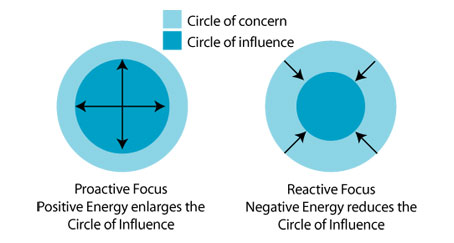We spend a lot of time, as leaders, talking about, and training people in, individual mindset and behaviour change. And we should. Investing in our people is a smart bet. Our organisations can only be as evolved as the people leading and working in them.
However, when we focus on the individual without including the underlying platform they are operating within – the system – then we are missing an opportunity. We can be working hard to improve and develop individuals and teams – and then sending them straight back into an environment that hasn’t changed and won’t enable them.
Think about it like buying top quality ingredients for a delicious cake, mixing them together carefully according to the recipe, and then putting them in an oven with a constantly changing temperature. You still have fabulous ingredients – in fact you might just have the best damn cake mix around – but it’s never going to cook properly.
Personal and team change are hard enough. Maintaining them in an environment that favours the status quo (and as humans we do like to stick with what is familiar) is creating unnecessary pressure for our teams – and ourselves.
Yes, it’s absolutely important to take accountability for what we can change, it’s just that what we can change is bigger than we think when we are sitting within a system that feels stuck and/or entrenched.
Take off the blinkers
We need to shift the focus from just looking internally, at ourselves and our teams – to a wider gaze, that incorporates the broader organisation. We need to consider our relationships with other teams and functions, our understanding of and commitment to what the organisation is trying to achieve.
Simon Sinek says: ‘When you get the conditions right, trust and cooperation prevail. Leaders set the conditions.’ It’s right there. Part of the leader’s job is to set the conditions – the system – our teams are working within.
Unfortunately, most of us have learned from experience that it is difficult to effect real systemic change.
Steven Covey in his classic book The 7 Habits of Highly Effective People notes that to be highly effective, we have to shift from being reactive to being proactive and focusing on what we can control.
Covey’s Circles of Influence and Control are a useful model to reflect on when considering changing the system in our workplace.
Covey explains we can clearly separate what we can influence and what we can only be concerned about, without the ability to influence, into separate circles.
We should be focusing most of our energy on our ‘Circle of Influence’ where we have the ability to effect real change, rather than investing time and effort on things that sit within our ‘Circle of Concern’ – things we can only be concerned about without the ability to change.
Where is your focus?
We only have so much energy and time and we should concentrate them where they will make the biggest impact, on the things we can change – the things inside our ‘Circle of Influence’. When we do this, we start to become increasingly proactive. It becomes something of a virtuous circle – and we feel more able to tackle bigger, systemic issues.
Many of us will already be doing this. The key to systemic change, however, is to reflect on the things we have moved into our Circle of Concern that might need to be moved back into our ‘Circle of Influence’. Have we included things here that we can actually impact and influence?
We’re all working hard to improve our businesses. It’s just that we might have, inadvertently, shifted some of the things we actually can influence out of our Circle of Influence and into our Circle of Concern, because they were too hard and too entrenched to change. This is how we broaden our view – we shift some of the big, difficult systemic changes back into our sight. We start to believe, again, that we can change them.
When we work on the ‘system’ we can impact at scale
Whether I am working with an individual or a team, I use the model below to highlight that whilst, as leaders, it is up to us to work on and be accountable for our mindset, and the ripples or contagious spread our behaviour can create throughout the organisation, it’s the additional, foundational system layer that is often overlooked.
As leaders, we need to be putting our energy into leveraging all three aspects – ‘mindset’, ‘behavior’ and the ‘system’ that underpins them if we want our organisation to have a High Performance, Trust Based Culture.
When we focus on all three, we start to realise that our mindset and behavior are not actually just about us.
Our mindset – expands to re-define who is in ‘our’ team, how we think about other departments, how we prioritise our work with them to leverage its impact and how our actions impact other areas.
Our behaviour – expands to include not just us and our team, but also how we interact across the broader organisation and the priority we place on our communication and time spent genuinely collaborating with other areas.
Our System – expands beyond what we initially include in our ability to influence to encompass the whole organisation, our customers, our suppliers and the broader community.
When we work in this way we not only create improved clarity throughout the organisation, we also hugely improve its alignment – alignment between the expectations of different teams and the way they can work together, instead of in separate silos, to deliver on our shared purpose.
We reduce friction between departments and teams, we open up communication and get clear on prioritising the work that gets us closer to our one, shared purpose, rather than the busy ‘noise’ of meetings, politics and unsurfaced, entrenched issues.
And the biggest pay off for everyone is that we are focusing on what really matters, together, in a clear and aligned way, we create the one thing we need most of all – ‘space’. Space to think. Space to create and innovate. Space to connect.
When good intentions get lost in a bad system…
One of my most formative experiences of uncovering a hidden system I was working within– and which highlighted the importance of developing a genuinely connected approach – happened when I was working with a large health care provider. We were evolving and professionalising, trying to ensure costs were as efficient as possible so that our focus could remain on providing the best service to the end user.
Many of our services required personal hygiene products for their clients. Procurement had ensured they did the best possible job of negotiating an excellent financial agreement when we purchased at scale. The issue occurred when the team on the front line, who were using these products with clients, realised they were not of an adequate quality. This created some very difficult issues for both the people using our services and our teams providing the service, both practically and in terms of dignity.
The decision we had made at ‘Head Office’ with the best possible intentions had a serious, negative impact on hundreds of people. And we didn’t find out about it until I happened to be on a visit to one of our services and one of my team explained it to me. Why hadn’t I found out about it sooner? How many people had been impacted by this?
Assumptions had been made, on both sides. The services had assumed they had to put up with these decisions and weren’t able to effect change. The leadership had assumed that if no one raised an issue, everything was fine.
Now we knew about it, the issue was quickly resolved. Everyone was coming to work to do a good job. We all had the right mindset, and we were all working hard to do the right thing – our behaviours matched our words – and yet, issues existed in the system because we weren’t well enough connected.
I learned many valuable lessons, including that, as leaders, it’s our responsibility to search for the issues that might be hiding in plain sight. Not to assume. To speak directly with, and listen to, the people in our teams because they know things that we don’t.
What’s being assumed in your organisation?
Whilst your business might not involve something like personal care products which had such an intrinsically de-humanising impact, please don’t push this example away because it doesn’t directly relate to your organisation. Remember, some of the policies for your team and your customers can have just as detrimental an impact. Some HR policies can be unintentionally de-humanising even though they were created with the best possible intent. A culture of presenteeism can be incredibly damaging when someone is juggling personal demands. A customer, or supplier, suffering financial hardship might not be treated with enough compassion.
These issues grow over time, and are never intentionally designed to create issues for our people, our customers and our suppliers. But they do. The best of intentions get lost and miscommunicated in complicated organisational systems. It’s our job, as leaders, to search for and surface these issues. We may not have invented the system, but it is up to us to improve it.
The first step is to consciously take off our blinkers and start to look for the problems in our system that we can’t currently see. We need to go and ask our teams:
What stops you from being able to do a good job?
What is it about our organisation that makes working here hard?
If I could fix one thing, what would have the biggest impact for our team? And the organisation?
I would love to hear more about what you discover.
Next time, we’re going to be taking our first look into the silos in our organisations, and how we can begin to work on them – by connecting our efforts with each other.




